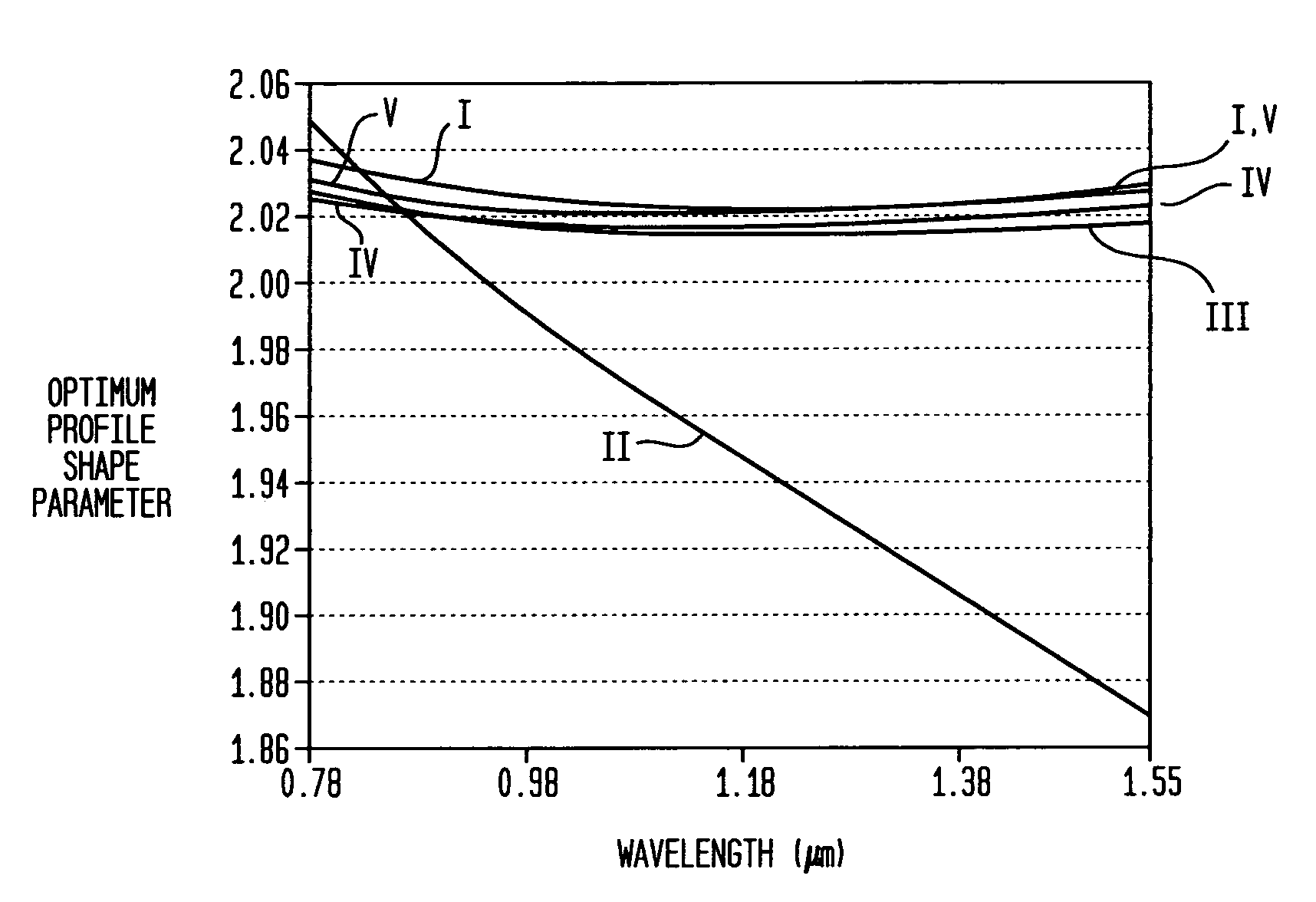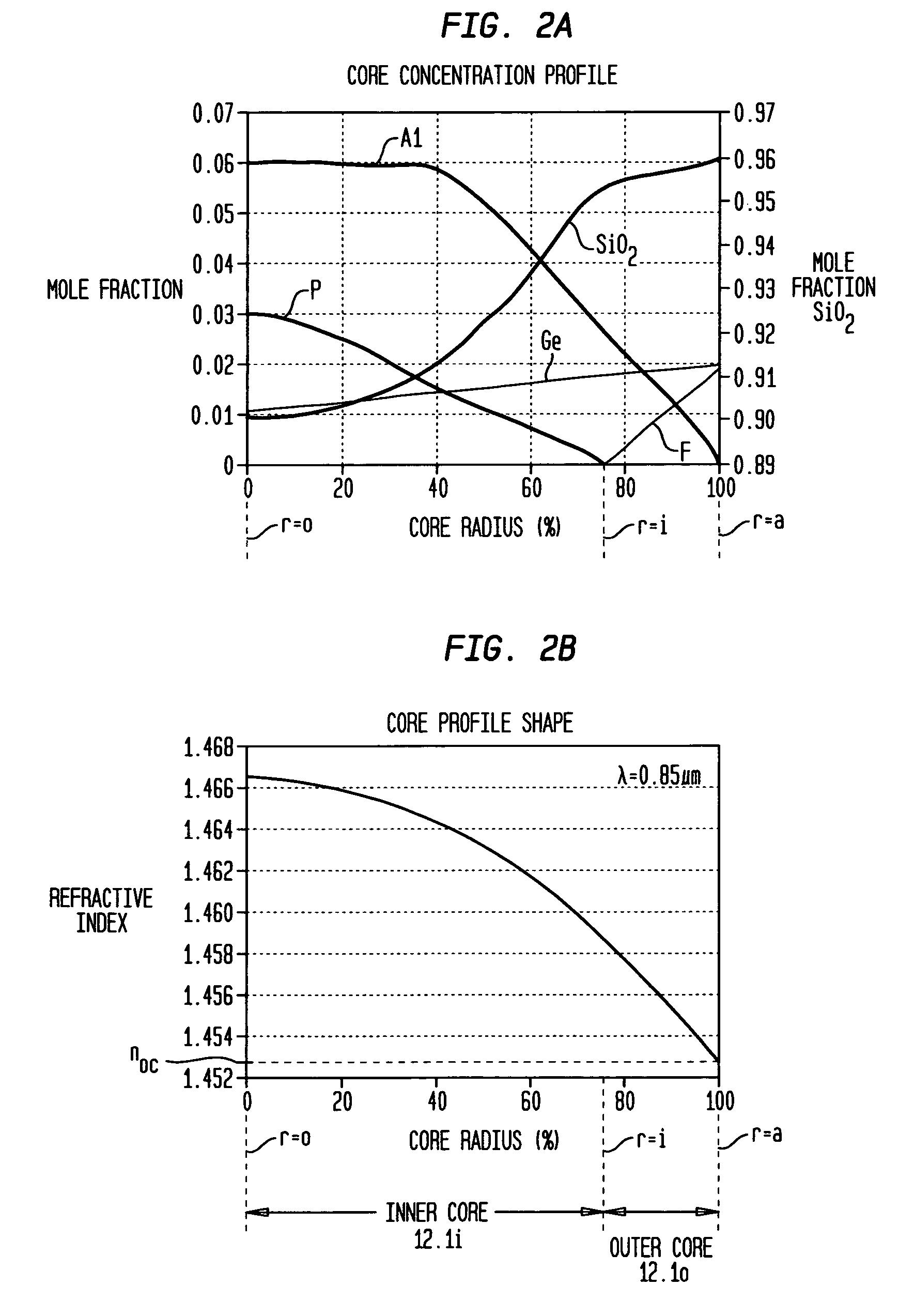Multi-wavelength, multimode optical fibers
a multi-mode, optical fiber technology, applied in the field of optical fibers, can solve the problems of not actually identifying specific materials that have dispersive properties, difficult to achieve adequate bandwidth to meet customer specifications, and difficult to develop materials and processes capable of satisfying requisite specifications. , to achieve the effect of small change in dopt/d
- Summary
- Abstract
- Description
- Claims
- Application Information
AI Technical Summary
Problems solved by technology
Method used
Image
Examples
Embodiment Construction
General Optical Fiber Fabrication
[0021]Optical fiber is produced from a glass preform that includes suitably doped regions from which the core and cladding will be formed. The preform is generally arranged vertically in a draw tower such that a portion of the preform is lowered into a furnace region. The portion of the preform placed into the furnace region begins to soften, and the lower end of the preform forms what is known as the neck-down region, where glass flows from the original cross-sectional area of the preform to the desired cross-sectional area of the fiber. From the lower tip of this neck-down region, the optical fiber is drawn.
[0022]The optical fiber typically contains a high-purity silicate glass core optionally doped with a refractive index-raising element such as germanium, an optional inner cladding of high-purity silica glass optionally doped with a refractive index-lowering element such as fluorine, and an outer cladding of undoped silica glass. In some manufact...
PUM
| Property | Measurement | Unit |
|---|---|---|
| wavelengths | aaaaa | aaaaa |
| refractive index profile | aaaaa | aaaaa |
| wavelength range | aaaaa | aaaaa |
Abstract
Description
Claims
Application Information
 Login to View More
Login to View More - R&D
- Intellectual Property
- Life Sciences
- Materials
- Tech Scout
- Unparalleled Data Quality
- Higher Quality Content
- 60% Fewer Hallucinations
Browse by: Latest US Patents, China's latest patents, Technical Efficacy Thesaurus, Application Domain, Technology Topic, Popular Technical Reports.
© 2025 PatSnap. All rights reserved.Legal|Privacy policy|Modern Slavery Act Transparency Statement|Sitemap|About US| Contact US: help@patsnap.com



